-
 Bitcoin
Bitcoin $76,444.7530
-3.77% -
 Ethereum
Ethereum $1,473.8355
-5.46% -
 Tether USDt
Tether USDt $0.9991
-0.08% -
 XRP
XRP $1.7965
-5.51% -
 BNB
BNB $553.4919
-0.36% -
 USDC
USDC $0.9999
-0.02% -
 Solana
Solana $105.2981
-1.74% -
 TRON
TRON $0.2303
0.81% -
 Dogecoin
Dogecoin $0.1422
-4.62% -
 Cardano
Cardano $0.5587
-4.41% -
 UNUS SED LEO
UNUS SED LEO $8.9866
1.01% -
 Toncoin
Toncoin $2.9933
-4.74% -
 Chainlink
Chainlink $10.9113
-4.81% -
 Stellar
Stellar $0.2215
-4.76% -
 Avalanche
Avalanche $16.1163
-3.29% -
 Sui
Sui $1.9371
-3.89% -
 Shiba Inu
Shiba Inu $0.0...01065
-6.69% -
 Hedera
Hedera $0.1469
-3.29% -
 MANTRA
MANTRA $6.2058
-1.53% -
 Dai
Dai $1.0000
0.01% -
 Bitcoin Cash
Bitcoin Cash $269.3457
-2.08% -
 Polkadot
Polkadot $3.3773
-5.87% -
 Litecoin
Litecoin $69.2204
-2.50% -
 Ethena USDe
Ethena USDe $0.9986
-0.01% -
 Bitget Token
Bitget Token $4.0180
-3.25% -
 Pi
Pi $0.5649
-4.50% -
 Hyperliquid
Hyperliquid $11.1928
-2.80% -
 Monero
Monero $195.3885
-4.41% -
 OKB
OKB $50.9235
-0.59% -
 Uniswap
Uniswap $4.7688
-6.95%
How to send tokens in Rabby Wallet?
Rabby Wallet offers a user-friendly way to send tokens like Bitcoin or Ethereum securely; just ensure the recipient's address is correct before confirming.
Apr 06, 2025 at 11:29 pm
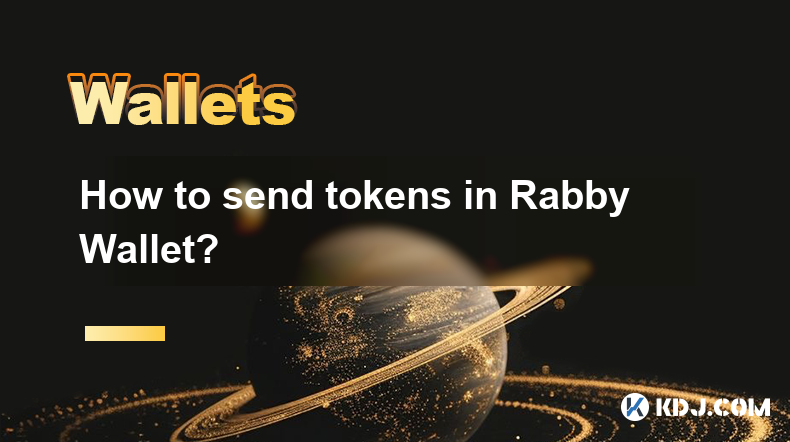
Sending tokens in Rabby Wallet is a straightforward process that allows users to transfer their digital assets securely and efficiently. Whether you're sending popular cryptocurrencies like Bitcoin or Ethereum, or other tokens, Rabby Wallet provides a user-friendly interface to manage your transactions. In this guide, we'll walk you through the detailed steps required to send tokens using Rabby Wallet, ensuring that you can complete the process with confidence and ease.
Accessing Rabby Wallet
Before you can send tokens, you need to access your Rabby Wallet. Here’s how you can do it:
- Open the Rabby Wallet application on your device. This could be a mobile app or a desktop application, depending on your preferred platform.
- Enter your password or use biometric authentication to unlock your wallet. This step ensures that only you can access your funds.
- Navigate to the main dashboard where you can see an overview of your assets and recent transactions.
Selecting the Token to Send
Once you're logged into your Rabby Wallet, you need to select the specific token you wish to send. Follow these steps:
- Click on the "Send" button typically located on the main dashboard or within the specific token’s page.
- Choose the token you want to send from the list of assets displayed in your wallet. This could be any token supported by Rabby Wallet, such as Bitcoin, Ethereum, or other ERC-20 tokens.
- Enter the amount you wish to send. Ensure that you have sufficient balance and consider any transaction fees that may apply.
Entering the Recipient’s Address
Sending tokens requires you to enter the recipient's address accurately. Here's how to do it:
- Input the recipient’s wallet address in the designated field. You can either type it manually or paste it from your clipboard. Be extremely careful to ensure the address is correct, as cryptocurrency transactions are irreversible.
- Optionally, you can add a memo or tag if the recipient's wallet requires it for certain tokens. This is particularly important for tokens like XRP or EOS.
- Double-check the address before proceeding to avoid sending your tokens to the wrong wallet.
Setting the Transaction Fee
Transaction fees are an essential part of sending tokens. Rabby Wallet allows you to set the fee according to your preference:
- Choose the transaction fee level from the options provided. Typically, you can select between low, medium, and high fees. A higher fee can result in faster transaction confirmation, while a lower fee might take longer to process.
- Review the estimated time for the transaction to be confirmed based on the selected fee. This helps you make an informed decision about the urgency of your transaction.
Reviewing and Confirming the Transaction
Before finalizing the transaction, it's crucial to review all the details:
- Check the recipient’s address, the amount, and the transaction fee one last time. Ensure that everything is correct and as intended.
- Click on the "Confirm" button to initiate the transaction. You may be prompted to enter your password or use biometric authentication again for added security.
- Wait for the transaction to be processed. Once confirmed, the tokens will be transferred from your wallet to the recipient’s wallet.
Tracking the Transaction
After sending the tokens, you can track the transaction to ensure it is processed successfully:
- Go to the "Transactions" or "History" section in your Rabby Wallet to view the status of your recent transactions.
- Look for the transaction ID (TXID) associated with your sent tokens. You can use this ID to track the transaction on the blockchain explorer relevant to the token you sent.
- Monitor the transaction status until it is confirmed on the blockchain. This can take anywhere from a few minutes to several hours, depending on the network congestion and the fee you selected.
Frequently Asked Questions
Q: Can I cancel a transaction after it has been sent in Rabby Wallet?
A: Once a transaction is sent and confirmed on the blockchain, it cannot be canceled or reversed. It's crucial to double-check all details before confirming the transaction.
Q: What should I do if I send tokens to the wrong address?
A: Unfortunately, if you send tokens to the wrong address, there is no way to retrieve them. Always verify the recipient's address before sending any tokens.
Q: How can I ensure the security of my Rabby Wallet when sending tokens?
A: To ensure the security of your Rabby Wallet, always use strong passwords, enable two-factor authentication if available, and never share your private keys or recovery phrases with anyone. Additionally, be cautious of phishing attempts and only download the Rabby Wallet from official sources.
Q: Are there any limits on the amount of tokens I can send in one transaction?
A: The limits on the amount of tokens you can send in one transaction depend on the specific token and the network's rules. For example, Bitcoin has a maximum transaction size, while Ethereum transactions are limited by gas limits. Always check the specific token's guidelines before sending large amounts.
Disclaimer:info@kdj.com
The information provided is not trading advice. kdj.com does not assume any responsibility for any investments made based on the information provided in this article. Cryptocurrencies are highly volatile and it is highly recommended that you invest with caution after thorough research!
If you believe that the content used on this website infringes your copyright, please contact us immediately (info@kdj.com) and we will delete it promptly.
- "Cardano (ADA) Price Could Dip Below $0.60, Following Previous Market Cycle"
- 2025-04-09 05:10:12
- BONK, the well-known meme coin, has risen over 35% in the last week, attracting meme coin investors in the market. So, what caused this rally?
- 2025-04-09 05:10:12
- Bitcoin (BTC) Investors May Not Exactly Feel It, but BTC Has Been a Relatively Good Bet
- 2025-04-09 05:05:12
- Donald's Bitcoin (DONBTC) Could Turn Early Investors into Multi-Millionaires, Like Shiba Inu (SHIB) and Dogecoin (DOGE) Did
- 2025-04-09 05:05:12
- 6 Upcoming Kraken Listings That Could Be the Next Big Thing in Crypto
- 2025-04-09 05:00:13
- COTI Unveils New Privacy-Focused Blockchain to Reshape Web3 Transactions
- 2025-04-09 05:00:13
Related knowledge
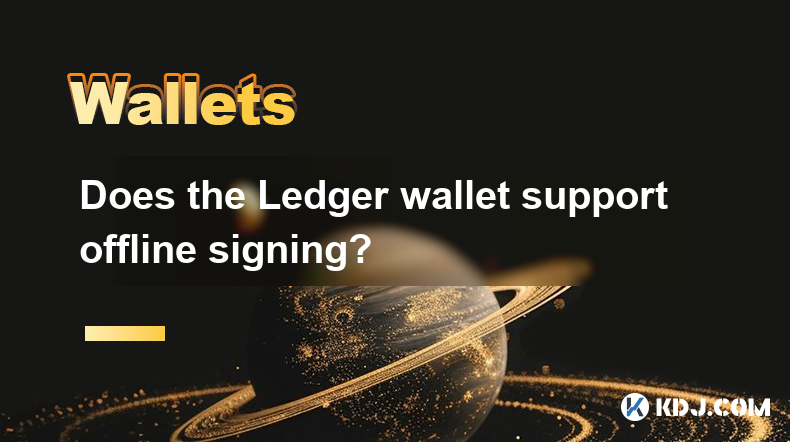
Does the Ledger wallet support offline signing?
Apr 09,2025 at 04:49am
Introduction to Ledger Wallet and Offline SigningThe Ledger wallet is a popular hardware wallet used by cryptocurrency enthusiasts to securely store their digital assets. One of the key features that users often inquire about is offline signing. Offline signing, also known as cold signing, is a security measure that allows users to sign transactions wit...
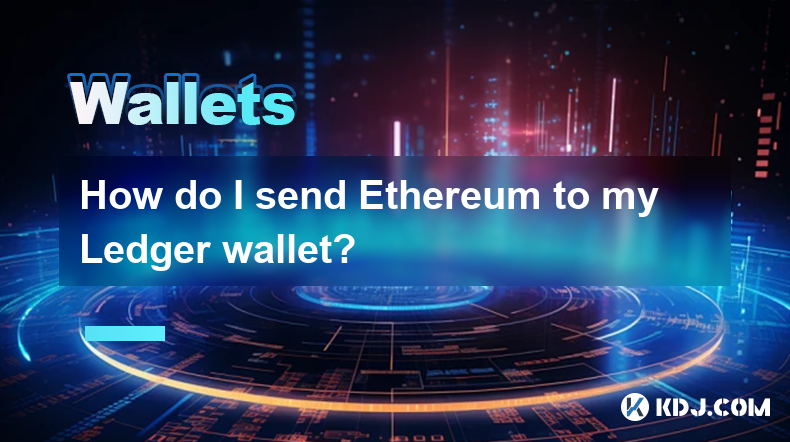
How do I send Ethereum to my Ledger wallet?
Apr 09,2025 at 03:21am
Sending Ethereum to your Ledger wallet involves a few straightforward steps, but it's crucial to follow them carefully to ensure the security of your funds. In this guide, we'll walk you through the process of transferring Ethereum to your Ledger wallet, ensuring that you understand each step and the necessary precautions. Preparing Your Ledger WalletBe...
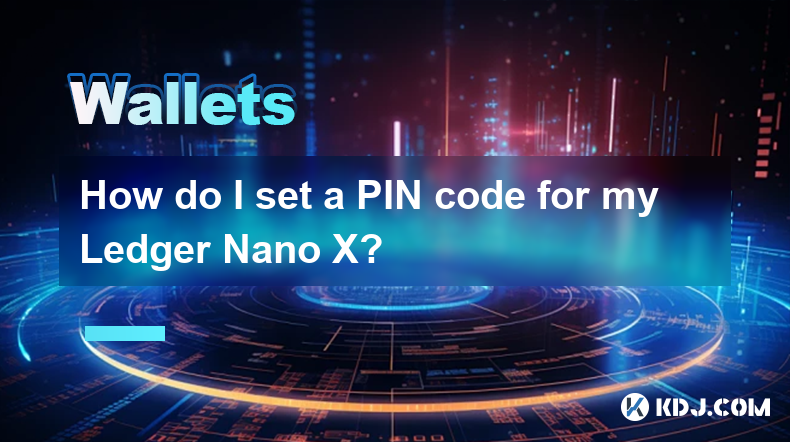
How do I set a PIN code for my Ledger Nano X?
Apr 08,2025 at 11:14pm
Setting a PIN code for your Ledger Nano X is a crucial step in securing your cryptocurrency assets. The PIN code acts as a primary layer of security, ensuring that only you can access your device. In this article, we will guide you through the process of setting up a PIN code on your Ledger Nano X, ensuring that you follow each step meticulously to main...
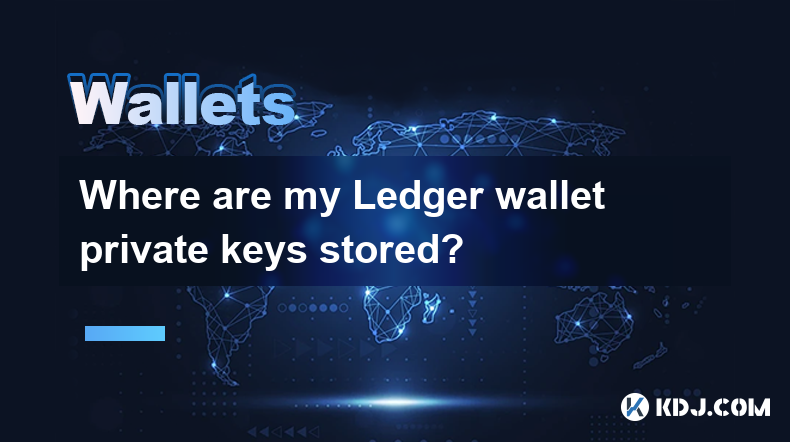
Where are my Ledger wallet private keys stored?
Apr 08,2025 at 10:35pm
When using a Ledger hardware wallet, one of the most critical aspects to understand is the storage and management of your private keys. This article will delve into the specifics of where your Ledger wallet private keys are stored, ensuring you have a comprehensive understanding of their security and accessibility. Understanding Private Keys in Ledger W...
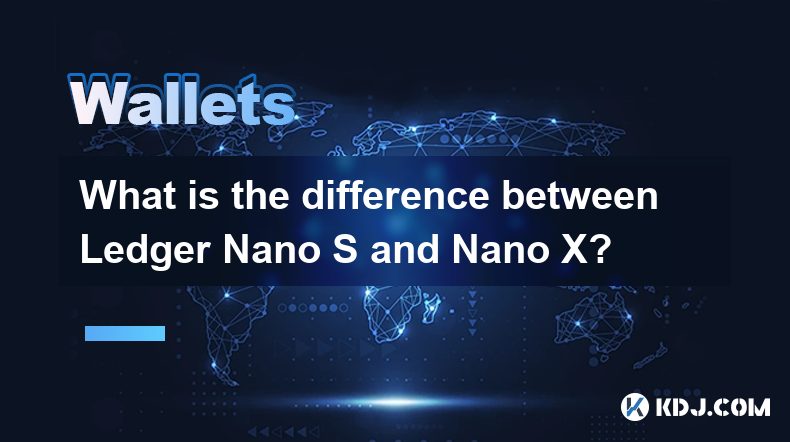
What is the difference between Ledger Nano S and Nano X?
Apr 09,2025 at 12:49am
When it comes to securing your cryptocurrencies, hardware wallets are often recommended as the safest option. Among the most popular hardware wallets are the Ledger Nano S and Ledger Nano X. Both devices are produced by Ledger, a well-known company in the cryptocurrency security industry. This article will delve into the differences between these two de...

How do I enable the Shield Transaction feature on Trezor?
Apr 08,2025 at 10:28pm
Enabling the Shield Transaction feature on Trezor involves a series of steps that allow you to enhance the privacy of your cryptocurrency transactions. This feature is particularly useful for users who want to protect their transaction history from being easily traced on the blockchain. In this article, we will guide you through the process of enabling ...

Does the Ledger wallet support offline signing?
Apr 09,2025 at 04:49am
Introduction to Ledger Wallet and Offline SigningThe Ledger wallet is a popular hardware wallet used by cryptocurrency enthusiasts to securely store their digital assets. One of the key features that users often inquire about is offline signing. Offline signing, also known as cold signing, is a security measure that allows users to sign transactions wit...

How do I send Ethereum to my Ledger wallet?
Apr 09,2025 at 03:21am
Sending Ethereum to your Ledger wallet involves a few straightforward steps, but it's crucial to follow them carefully to ensure the security of your funds. In this guide, we'll walk you through the process of transferring Ethereum to your Ledger wallet, ensuring that you understand each step and the necessary precautions. Preparing Your Ledger WalletBe...

How do I set a PIN code for my Ledger Nano X?
Apr 08,2025 at 11:14pm
Setting a PIN code for your Ledger Nano X is a crucial step in securing your cryptocurrency assets. The PIN code acts as a primary layer of security, ensuring that only you can access your device. In this article, we will guide you through the process of setting up a PIN code on your Ledger Nano X, ensuring that you follow each step meticulously to main...

Where are my Ledger wallet private keys stored?
Apr 08,2025 at 10:35pm
When using a Ledger hardware wallet, one of the most critical aspects to understand is the storage and management of your private keys. This article will delve into the specifics of where your Ledger wallet private keys are stored, ensuring you have a comprehensive understanding of their security and accessibility. Understanding Private Keys in Ledger W...

What is the difference between Ledger Nano S and Nano X?
Apr 09,2025 at 12:49am
When it comes to securing your cryptocurrencies, hardware wallets are often recommended as the safest option. Among the most popular hardware wallets are the Ledger Nano S and Ledger Nano X. Both devices are produced by Ledger, a well-known company in the cryptocurrency security industry. This article will delve into the differences between these two de...

How do I enable the Shield Transaction feature on Trezor?
Apr 08,2025 at 10:28pm
Enabling the Shield Transaction feature on Trezor involves a series of steps that allow you to enhance the privacy of your cryptocurrency transactions. This feature is particularly useful for users who want to protect their transaction history from being easily traced on the blockchain. In this article, we will guide you through the process of enabling ...
See all articles






















































































